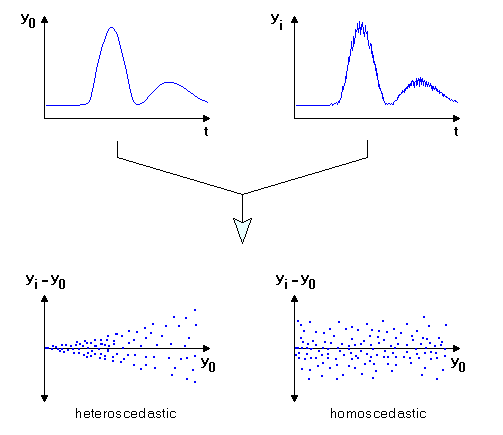| Fundamentals of Statistics contains material of various lectures and courses of H. Lohninger on statistics, data analysis and chemometrics......click here for more. |

|

Home  Basic Concepts Basic Concepts  Signals and Data Signals and Data  Scedasticity Scedasticity |
|
| See also: Types of Noise, Analysis of Residuals | |
ScedasticityWhen developing models of measured data it is generally important to analyse the residuals. One important aspect is whether the residuals vary with the signal level, i.e. if the random part of the signal grows with increasing signal level. We therefore distinguish two cases:
The following interactive example shows further details on the difference between homo- and heteroscedastic data.
|
|
Home  Basic Concepts Basic Concepts  Signals and Data Signals and Data  Scedasticity Scedasticity |
|


